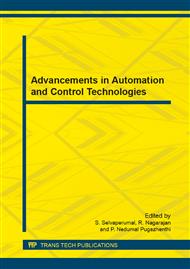p.310
p.317
p.322
p.328
p.334
p.340
p.346
p.352
p.356
Automatic Power Supply for Residential Consumer Using Microgrid with Hybrid Power Supply
Abstract:
Abstract. This paper proposes a Power Management System (PMS) designed to supply continuous power for residential using low voltage Microgrid. The Microgrid equipped with a hybrid power supply includes, battery storage system and three power supplies: a wind mill, photovoltaic (PV) emulator and proton exchange membrane (PEM) fuel cell (FC). The connections of the energy resources to the common ac bus make use of power inverters with specific functionalities. The automatic power management system for the operation and control of the distributed energy resources connected to residential electric power installations, taking into account both the grid connected operating mode and the islanded operating mode. The PMS provides rapid response to support the critical load. It can also operate as a standalone system in case of grid failure like an incessant power supply. The operating behavior of the proposed automatic system is simulated by using MATLAB SIMULINK.
Info:
Periodical:
Pages:
334-339
Citation:
Online since:
June 2014
Price:
Сopyright:
© 2014 Trans Tech Publications Ltd. All Rights Reserved
Share:
Citation:


